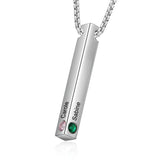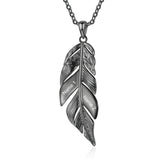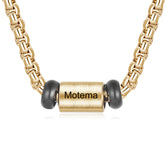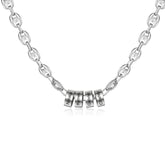Ancient Jewelry Techniques That Are Still Used Today
Jewelry That Defies Time: Why Ancient Techniques Still Shine
Before the age of automation and 3D printers, there were hands. Skilled, patient hands that shaped gold with fire, bent silver into spirals, and carved stones with tools forged from rock and bronze. Thousands of years later, we still wear what they made—sometimes quite literally.
But even more fascinating is that their methods live on. Many of the ancient jewelry techniques that once adorned pharaohs and emperors remain central to how fine jewelry is crafted today. These techniques continue to shape everything from luxury items to handmade custom necklaces. So what makes these old ways so enduring?
What Are Ancient Jewelry Techniques Still Used Today?
Let’s begin with a list of ancient techniques still practiced in modern jewelry workshops:
- Filigree
- Granulation
- Chasing and Repoussé
- Lost-Wax Casting
- Enameling
- Wire Wrapping
- Intaglio
- Beadwork
Each one of these techniques tells a story of resilience. Passed through cultures and centuries, they’ve not only survived—they’ve adapted. Let’s break them down.
Filigree: The Art of Airy Intricacy
What is filigree in jewelry?
Filigree is a centuries-old metalworking technique in which fine threads of gold or silver are twisted and soldered to create ornate lace-like patterns. It’s believed to have originated in Mesopotamia around 3000 BCE and later flourished in ancient Greece, India, and Italy.
The beauty of filigree lies in its contrast—an intricate design that feels both delicate and strong, airy yet structured.
How filigree appears in modern designs
Today, filigree is often used in vintage-inspired engagement rings, earrings, and bracelets. Brands that emphasize handcrafted detail or antique flair frequently rely on it. It’s also a hallmark of traditional jewelry from regions like Yemen, Portugal, and India. Filigree appeals to those who appreciate heritage craftsmanship in a minimalist world.
Granulation: Fire and Gold in Microscopic Detail
What is granulation in jewelry making?
Granulation involves placing tiny spheres of gold—sometimes less than a millimeter wide—onto a surface in decorative patterns, then fusing them without visible solder. This process dates back to ancient Sumer and was famously refined by the Etruscans around 700 BCE.
Modern interpretations of granulation
Despite requiring incredible precision, granulation continues to be used by modern master jewelers. It’s especially popular among designers creating one-of-a-kind pieces. While technology can replicate its look, authentic granulation is still a manual process requiring deep skill and patience.
Its matte, subtle texture adds a unique visual softness that machine-finished jewelry can’t easily imitate.
Chasing and Repoussé: Sculpting Stories in Metal
What is the difference between chasing and repoussé?
Repoussé is the technique of shaping metal from the back to create raised reliefs, while chasing involves refining details from the front. These complementary techniques were used in ancient Greece, Egypt, and across Asia to decorate armor, vessels, and of course—jewelry.
Chasing and repoussé in today's jewelry
Artisan jewelers still employ these methods to create sculptural pieces. Unlike casting, which relies on molds, these techniques give jewelry a hand-sculpted texture. You’ll often see them in statement cuffs, medallions, and brooches that double as miniature works of art.
Lost-Wax Casting: Molten Art with Ancient Roots
How does lost-wax casting work?
Lost-wax casting is a method where a wax model is created, encased in a heat-resistant mold, then melted out. Molten metal is then poured into the cavity left by the wax, creating a precise metal duplicate.
Its journey from Pharaohs to now
The technique was used extensively in Ancient Egypt and Rome, enabling the creation of complex gold forms like signet rings and ceremonial jewelry. Thousands of years later, the process is still foundational to fine jewelry production.
Modern jewelers may use digital wax printers, but the principles remain unchanged. It’s especially crucial for creating detailed rings, pendant charms, and other bespoke items where precision matters.
Enameling: Color That Lasts Centuries
What is enameling in jewelry?
Enameling involves fusing powdered glass to metal surfaces under high heat, producing colorful and durable finishes. Variations like cloisonné and champlevé have been found in ancient Chinese, Byzantine, and Islamic jewelry.
How enamel continues to dazzle
Today, enamel is found in both fine and fashion jewelry, adding color without gemstones. It’s used in everything from contemporary geometric pieces to classic floral brooches. Enameling is also key to high-end watches and collectibles, where precision and permanence are paramount.
Wire Wrapping: Simplicity That Holds
What is wire wrapping in jewelry making?
Wire wrapping is one of the oldest jewelry construction techniques, dating back to 2000 BCE. It involves bending, looping, and twisting wire to encase a gemstone or connect elements—without heat or soldering.
Why wire wrapping still thrives
Its appeal lies in its accessibility and versatility. From street fairs to high-end artisan markets, wire-wrapped pendants and rings are beloved for their handmade charm. It’s especially popular among jewelers working with raw crystals or those who prefer a more organic, less industrial aesthetic.
Intaglio: Reverse Carving with Forward Legacy
What is intaglio in jewelry?
Intaglio refers to the practice of carving into the surface of gemstones to create recessed designs. Unlike cameos, which raise the image, intaglio pushes it inward. The result? A miniature relief image that can be used to stamp wax seals.
From Roman signets to collector's heirlooms
This technique peaked in ancient Rome, where signet rings were personal tools and status symbols. Today, intaglio pieces are treasured for their historical resonance and handcrafted detail. Some modern designers reinterpret them using contemporary motifs, blending past and present in one wearable sculpture.
Beadwork: Woven Traditions Across Continents
How is beadwork used in jewelry?
Beadwork involves stitching, stringing, or weaving small beads—often glass, shell, or stone—into patterns. It was developed independently by cultures from the Zulu of South Africa to the Navajo of the American Southwest.
The cultural heartbeat of jewelry
Beadwork isn’t just technique—it’s narrative. It tells stories, marks rites of passage, and symbolizes identity. Today, beadwork appears in both fashion-forward pieces and museum-quality cultural jewelry. It continues to be an expressive medium for artists and designers alike.
Frequently Asked Questions
What are the oldest jewelry techniques still in use?
Some of the oldest jewelry techniques still practiced include filigree, granulation, wire wrapping, and lost-wax casting. These date back thousands of years and are still used by artisan and luxury jewelers worldwide.
Why do jewelers still use ancient techniques?
Ancient methods offer unmatched character and craftsmanship. They allow for intricate detail, human touch, and a timeless aesthetic that modern mass production often lacks. Many techniques are also sustainable and rely on simple tools rather than machines.
Are traditional techniques used in custom jewelry?
Absolutely. Techniques like chasing, enameling, and lost-wax casting are often used in custom necklaces and rings, especially when clients want something deeply personal and handcrafted.
Is there a difference between ancient and modern jewelry-making tools?
While the core techniques remain the same, modern tools are more precise and efficient. However, many artisans still prefer hand tools and traditional methods to maintain authenticity and control in their work.
Where Craftsmanship Never Ages
It’s easy to assume that technology always replaces tradition. But jewelry tells a different story. These ancient techniques, born from necessity and nurtured by culture, haven’t just survived—they’ve thrived. They're still whispering through every delicate twist of filigree, every hammered repoussé detail, every bead stitched with care.
In many ways, the jewelry we admire most today isn’t a departure from the past—it’s a continuation of it.













